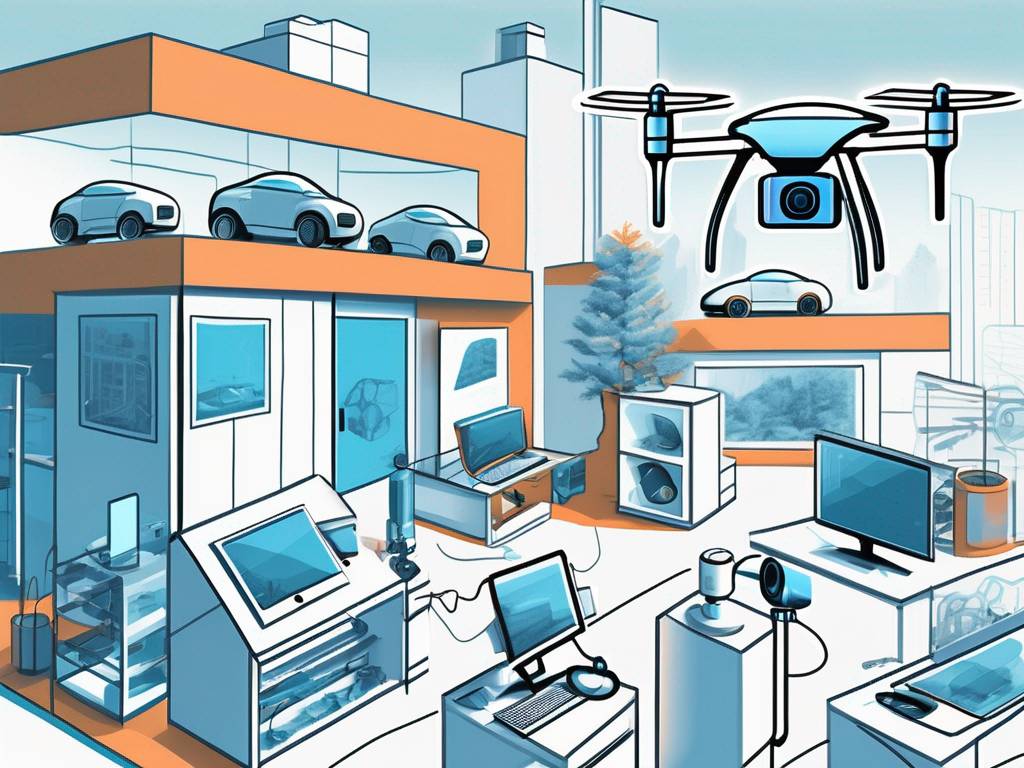Natural Language Processing: Artificial Intelligence Explained
Natural Language Processing (NLP) is a subfield of artificial intelligence (AI) that focuses on the interaction between computers and humans through natural language. The ultimate objective of NLP is to read, decipher, understand, and make sense of the human language in a valuable way. It is a discipline that marries computer science and linguistics, therefore, it is extremely complex and intricate. This article will delve into the depths of NLP, its applications, techniques, challenges, and future prospects.
As we move further into the digital age, the ability for machines to understand and interact using human language becomes increasingly important. NLP is at the forefront of this movement, providing the necessary tools and techniques for computers to understand and respond to natural language inputs. This article will provide a comprehensive overview of NLP, its history, and its role in the development of artificial intelligence.
History of Natural Language Processing
The history of Natural Language Processing is a journey that dates back to the 1950s. The earliest work in NLP can be traced back to the machine translation efforts during the Cold War, where attempts were made to automate translation between Russian and English. However, these early systems were limited by the technology of the time and the complexity of human language.
Over the years, NLP has evolved significantly. In the 1960s and 70s, the focus of NLP research was on rule-based methods, which involved manually coding large sets of rules. By the 1980s, the focus had shifted to statistical methods, which used mathematical models to understand language. The advent of machine learning in the late 20th and early 21st century has further revolutionized NLP, allowing for more sophisticated and nuanced language understanding.
Early Beginnings
The earliest work in NLP was focused on machine translation, with the goal of translating text from one language to another. This was a monumental task, as it required the computer to understand not only the syntax and grammar of each language, but also the nuances and cultural context. Despite these challenges, early researchers made significant strides in this area, laying the groundwork for future developments in NLP.
One of the most notable early projects was the Georgetown-IBM experiment in 1954, which involved fully automatic translation of more than sixty Russian sentences into English. The success of this project sparked interest in machine translation and led to increased funding and research in this area. However, the complexity of human language proved to be a significant hurdle, and progress in this area was slow.
Rule-Based Era
In the 1960s and 70s, the focus of NLP shifted to rule-based methods. These methods involved manually coding a large set of rules for the computer to follow when processing language. This was a time-consuming and labor-intensive process, but it allowed for more precise control over the language processing task.
One of the most notable rule-based systems was SHRDLU, developed by Terry Winograd at MIT. SHRDLU was able to understand and respond to commands in a restricted version of English, demonstrating the potential of rule-based methods. However, these systems were limited by the sheer number of rules required and the difficulty of coding these rules into the system.
Statistical Era
The 1980s saw a shift in NLP from rule-based methods to statistical methods. These methods used mathematical models to understand and process language, allowing for more flexibility and scalability. The advent of statistical methods marked a significant turning point in the history of NLP, opening up new possibilities for language understanding.
Statistical methods rely on large amounts of data to train their models. This data-driven approach allowed for more nuanced understanding of language, as the models could learn from the patterns in the data. However, these methods also required large amounts of computational power, which was a limiting factor in the early days of statistical NLP.
Hidden Markov Models & N-grams
Two of the most important statistical methods in early NLP were Hidden Markov Models (HMMs) and N-grams. HMMs are statistical models that are used to predict a sequence of unknown (hidden) variables based on a set of observed variables. In the context of NLP, HMMs were used for tasks such as part-of-speech tagging and named entity recognition.
N-grams, on the other hand, are sequences of N words that are used to predict the next word in a sentence. N-grams were used in a variety of NLP tasks, including machine translation and speech recognition. These methods marked a significant advancement in NLP, but they were still limited by the amount of data and computational power required.
Machine Learning Era
The late 20th and early 21st century saw the advent of machine learning in NLP. Machine learning is a type of artificial intelligence that provides systems the ability to automatically learn and improve from experience without being explicitly programmed. This has revolutionized NLP, allowing for more sophisticated and nuanced language understanding.
Machine learning algorithms can learn from data and make predictions or decisions without being explicitly programmed to perform the task. This allows for more flexibility and scalability, as the algorithms can learn from the patterns in the data. Machine learning has been used in a variety of NLP tasks, including sentiment analysis, topic modeling, and machine translation.
Neural Networks & Deep Learning
One of the most significant developments in machine learning has been the advent of neural networks and deep learning. Neural networks are a type of machine learning model that is designed to mimic the human brain. They are composed of layers of nodes, or “neurons”, that can learn to recognize patterns in data.
Deep learning is a type of machine learning that uses neural networks with many layers. This allows the model to learn more complex patterns in the data. Deep learning has been used in a variety of NLP tasks, including machine translation, sentiment analysis, and speech recognition. The advent of deep learning has further revolutionized NLP, opening up new possibilities for language understanding.
Challenges in Natural Language Processing
Despite the significant advancements in NLP, there are still many challenges that need to be overcome. One of the biggest challenges is the complexity of human language. Human language is highly ambiguous and context-dependent, making it difficult for computers to understand.
Another challenge is the lack of data in some languages. While there is a wealth of data available in English, many other languages have limited data available. This makes it difficult to train NLP models in these languages. Additionally, cultural nuances and idioms present another layer of complexity in understanding and interpreting human language.
Ambiguity & Context-Dependence
One of the biggest challenges in NLP is the ambiguity and context-dependence of human language. Words can have multiple meanings depending on the context in which they are used. For example, the word “bank” can refer to a financial institution, the side of a river, or a turn in a road, depending on the context. This makes it difficult for computers to understand language, as they need to understand the context in which words are used.
Additionally, human language is highly context-dependent. The meaning of a sentence can change depending on the context in which it is used. For example, the sentence “I saw the man with the telescope” can mean that I saw a man who was holding a telescope, or it can mean that I used a telescope to see a man. This context-dependence makes it difficult for computers to understand language, as they need to understand the broader context in which sentences are used.
Lack of Data in Some Languages
Another challenge in NLP is the lack of data in some languages. While there is a wealth of data available in English, many other languages have limited data available. This makes it difficult to train NLP models in these languages, as the models need large amounts of data to learn from.
Additionally, the quality of the data can also be a challenge. The data used to train NLP models needs to be clean and accurate. However, in many cases, the available data is noisy and contains errors. This can lead to poor performance of the NLP models.
Future of Natural Language Processing
The future of Natural Language Processing is promising, with many exciting developments on the horizon. With advancements in machine learning and artificial intelligence, we can expect to see more sophisticated and nuanced language understanding. This will open up new possibilities for interaction between humans and machines, making our lives easier and more convenient.
However, there are also many challenges that need to be overcome. The complexity of human language, the lack of data in some languages, and the need for more computational power are all hurdles that need to be overcome. Despite these challenges, the future of NLP is bright, and we can expect to see many exciting developments in the coming years.
Advancements in Machine Learning
One of the most exciting areas of research in NLP is the advancements in machine learning. With the advent of deep learning and neural networks, we can expect to see more sophisticated and nuanced language understanding. This will allow for more accurate and efficient machine translation, sentiment analysis, and speech recognition.
Additionally, the development of new machine learning algorithms and techniques will also contribute to the advancement of NLP. These new methods will allow for more flexibility and scalability, opening up new possibilities for language understanding.
Increased Use of NLP in Everyday Life
Another exciting development in NLP is the increased use of NLP in everyday life. From voice assistants like Siri and Alexa, to automatic translation services like Google Translate, NLP is becoming an integral part of our daily lives. This trend is expected to continue, with more and more applications of NLP being developed.
As NLP becomes more prevalent, we can expect to see more sophisticated and nuanced interactions between humans and machines. This will make our lives easier and more convenient, and will open up new possibilities for communication and interaction.
Empower Your Vision With WestLink’s Expertise in AI & NLP
As you navigate the evolving landscape of natural language processing and seek to leverage AI’s transformative power, WestLink is here to guide you from concept to reality. Our seasoned team has served over 100 clients, including industry giants like Citizen Watch and Bose, with cutting-edge solutions in machine learning, cloud software, and AI. With a proven track record of excellence and a portfolio of award-winning projects, we are dedicated to crafting custom, scalable, and innovative systems tailored to your unique challenges. Discover how we can help you harness the potential of AI and NLP technology!

 hello@westlink.com
hello@westlink.com  (866) 954-6533
(866) 954-6533  700 N Colorado Blvd,
700 N Colorado Blvd,






Comments